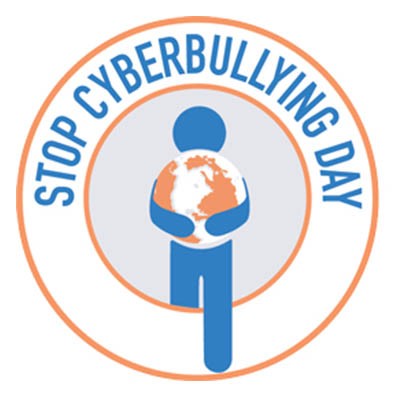The Connection, Inc Blog
As technology has evolved, so have our capabilities of using it. While this has led to great improvements in how we can live our lives, it has also made it much easier for us to torment and harass one another. This is a huge problem, and growing, so it is important to know how to take a stand against it - both at home, and in the workplace.
The Cybersmile Foundation was formed on June 17th, 2012, to help spread awareness of this problem and promote online inclusivity over toxic harassment and abuse. Unfortunately, their efforts are very much needed, as cyberbullying is still a pervasive problem.
What is a Cyberbully?
A cyberbully is pretty much what it sounds like: they are someone who torments others, causing them pain and angst, over a digital medium. Common media for a cyberbully to leverage include social media, online forums, and even texting and instant messaging. Since this form of harassment doesn’t require the bully and their target to be in the same place, there is a much greater timeframe of opportunity for this kind of bullying to take place. While many cyberbullies work alone, it isn’t uncommon for groups of people to engage in such activities cooperatively. Not only can this kind of bullying be very public, it can more insidiously be kept private, and many cyberbullies act anonymously to protect their own identities. Even worse, a total stranger may be the one to target someone as a victim of their attacks.
What possibly makes cyberbullying so insidious, is the fact that the target may not even be aware that it is going on. If, for instance, nasty things are being said on a social media platform or profile that the target cannot access, the only way they will find out is if someone says something - which doesn’t always happen.
Workplace Cyberbullying
While it may be known best as something that kids and adolescents have to contend with, cyberbullying has been seen among all age groups. This has only become more true in an increasingly digital workplace, where tools like email, instant messaging, and social media are leveraged for their productivity benefits. Considering this increase, it comes as no surprise that the workplace is becoming prime hunting grounds for cyberbullies. A study that polled almost 3,000 people found that 96 percent - yes, 96 - had been on the receiving end of workplace bullying.
Whether this cyberbullying takes the shape of gossip over instant messages between conspiring coworkers or a manager that sends abusive and unpleasant emails at intentionally inconvenient times, it creates a hostile work environment that erodes motivation and engagement and makes collaboration effectively impossible.
What Can Be Done
There are actions that both the recipient of cyberbullying and their employer can take to discourage this kind of unprofessional and hurtful behavior from occurring.
First, if the recipient of this kind of abuse is aware of the situation, they need to keep a cooler head and speak up for themselves. Calmly, rationally, and politely, the recipient should inform the perpetrating coworker that the behavior is to stop. Taking the high road, as it is with most interpersonal confrontations, is the best option when harassment is involved.
The receiving employee should also start collecting evidence. This will help them support their position if the time should come that they need to lodge a formal complaint. Keeping emails, social media posts, and other instances that they feel constitute abusive and hurtful behavior will give them what they need. Furthermore, they should also educate themselves on their rights as they pertain to their personal information. If some has been shared by the cyberbully, there could have been some laws broken. Neither defamation nor data protection are laughing matters.
An employer should want to create a working environment that runs smoothly, making it more likely to be productive. Harassment and cyberbullying throw a wrench in operations, so it only makes sense that an employer would want it to stop. Furthermore, the employer needs to make it clear to their employees that cyberbullying will not be tolerated. To do this, there should be a policy prepared that informs their employees what conduct will (and what conduct will not) be tolerated between employees, inside and outside of the office and work hours. This policy should be introduced during a new employee orientation, and if the issue was widespread enough, reviewed among the staff after an instance of workplace cyberbullying.
For more information about cyberbullying and additional resources, visit the official Stop Cyberbullying Day website. Technology is meant to help us grow as businesses, as people, and ultimately, as a society - not to tear each other down. Together, we can work to make that more the case.
When you want your workforce to operate more productively, and engagement has been shown to have positive effects on productivity, it makes sense that you would want to actively promote activities that have been shown to improve engagement. One approach that many companies and organizations are now embracing is gamification. Let’s discuss the concept of gamification, and how it might benefit your business.
For starters, it may help to get some more context into what gamification is, exactly.
Understanding Workplace Gamification
At its core, gamification is the philosophy of making rote processes and tasks more engaging by taking the components that make games fun and integrating them into these tasks and processes. In theory, this will result in a more content workforce, and a more successful business, and there is plenty of anecdotal evidence to support how effective this approach can be.
For just one example, one only has to turn to the many different educational applications and computer software titles available today. Concealed behind a fun story and the colorful characters driving the plot, the game’s mechanics actively encourage learning by requiring the young player to complete activities designed to improve their skills in mathematics and grammar. In this way, the learning process becomes more fun, motivating the children playing the game to continue doing so.
The same approach can be found in many applications aimed towards adults--specifically, adults in the workplace.
Gamifying the Workplace
One of the best things about workplace gamification is how easily it can be applied to someone’s processes at any level. For example:
- Training processes can be gamified by using learning portals that introduce new recruits and veterans alike to basic workplace requirements and procedures.
- Gamified achievements and rewards can be given to employees for accomplishing more and sticking to set procedures.
- In the game format, feedback and contextual correction can be given live, allowing your employees to experience real-time training benefits.
Of course, we also have to discuss the benefit to the well-being of your employees that gamification can bring. Many companies have elected to gamify the health status of their employees over their daily tasks. This has helped to fight the impacts that a sedentary job has been shown to have on an employee’s health. With healthier employees, companies also see decreased absenteeism, as sick days become less frequently needed.
Finally, gamification is hugely beneficial to team building. Look at how popular eSports have become amongst companies, with coworkers forming teams to play together as a group. Sure, this makes them a more cohesive and communicative team, but the real benefit comes from the engagement your team will feel as a result of these games. Ideally, it is an employee who is left to organize and manage these activities, making the results much more organic.
While eSports are a little out of our professional wheelhouse, we can assist your company’s productivity with numerous IT solutions and other strategies! To find out more about what we can do for you, reach out to us at (732) 291-5938.
An engaged employee will be invested in the future of your company, as well as their own future that they can see within your business. Unfortunately, research showcases that the numbers don’t look so bright for employee engagement in the workplace. According to a 2015 poll from Gallup, only about 30% of employees find themselves engaged in the workplace, while about 50% say they aren’t engaged with their work, and 20% claim to be actively disengaged by their workplace.




